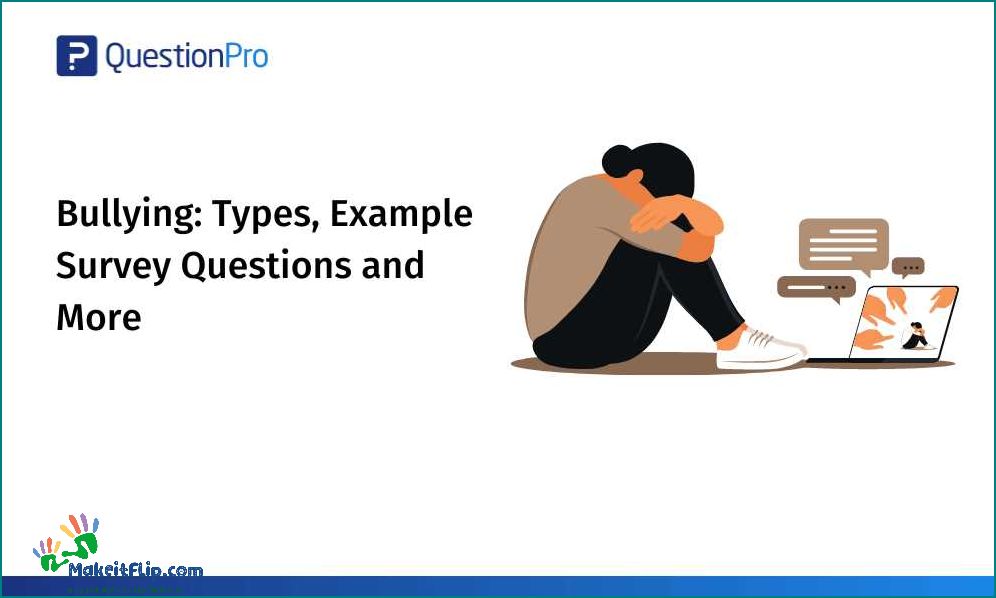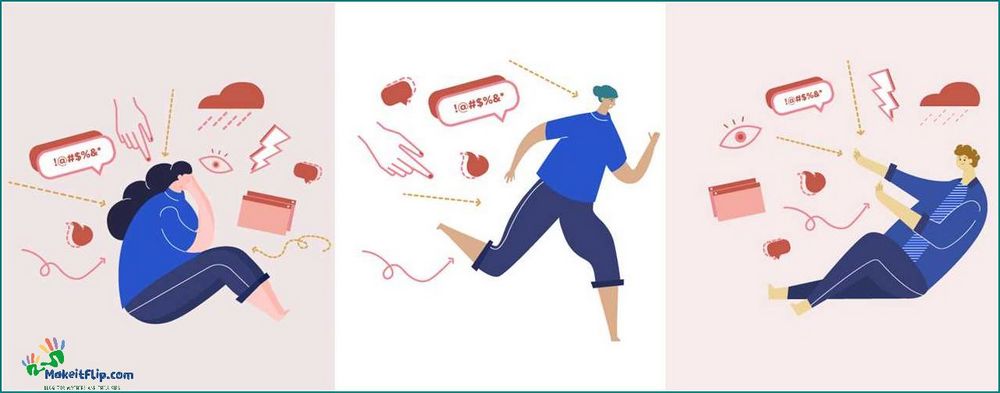Contents
Understanding and Combating Social Bullying: Strategies for Addressing this Harmful Behavior

Social bullying, also known as relational bullying, is a form of aggression that involves the use of social power to harm others. It is characterized by repeated acts of intimidation, teasing, harassment, isolation, exclusion, ridicule, humiliation, and gossip. Unlike physical bullying, social bullying does not leave visible scars, but its impact can be just as damaging, if not more so.
One of the key features of social bullying is the intent to harm someone’s social standing or relationships. This can be done through spreading rumors, manipulating social dynamics, or using social media to publicly shame or embarrass others. The goal is to isolate the target and undermine their self-esteem, making them feel powerless and unworthy of social acceptance.
Social bullying can occur in various settings, such as schools, workplaces, and even within social groups. It can be perpetrated by individuals or groups, and it often goes unnoticed by adults or authority figures. This makes it crucial for us to educate ourselves and others about the signs and consequences of social bullying, as well as the strategies for addressing and preventing it.
Understanding social bullying is the first step towards creating a safe and inclusive environment for everyone. By recognizing the harmful effects of this behavior and taking a stand against it, we can empower victims, promote empathy and kindness, and ultimately build a society that values respect and acceptance.
What is Social Bullying?

Social bullying, also known as relational bullying, is a form of harassment that involves manipulating, intimidating, or excluding individuals in social settings. It is a harmful behavior that can cause significant emotional distress and long-lasting psychological effects.
Social bullying can take various forms, including:
- Teasing: Making fun of someone, often repeatedly and in a hurtful manner.
- Intimidation: Using threats, physical presence, or aggressive behavior to instill fear in others.
- Ridicule: Mocking or belittling someone’s appearance, abilities, or characteristics.
- Gossip: Spreading rumors or sharing negative information about someone to damage their reputation.
- Exclusion: Deliberately leaving someone out of social activities or isolating them from a group.
- Isolation: Intentionally isolating an individual by ignoring or shunning them.
- Cyberbullying: Using electronic communication platforms, such as social media or messaging apps, to bully or harass others.
These behaviors can occur in various settings, such as schools, workplaces, or online platforms, and can have severe consequences for the victims. It is important to raise awareness about social bullying and take steps to address and prevent it.
Definition and Types
Social bullying refers to the intentional and repetitive act of causing harm or distress to others through teasing, ridicule, cyberbullying, gossip, intimidation, harassment, exclusion, or humiliation. It is a form of aggressive behavior that occurs within social relationships, often in schools, workplaces, or online platforms.
Teasing involves making fun of someone in a playful or hurtful manner, often targeting their appearance, abilities, or personal characteristics. Ridicule is similar to teasing but is usually more intense and intended to belittle or humiliate the target.
Cyberbullying is a type of social bullying that occurs online, through electronic devices and social media platforms. It includes sending threatening or derogatory messages, spreading rumors, or sharing embarrassing photos or videos without consent.
Gossip involves spreading rumors or talking negatively about someone behind their back, often with the intention of damaging their reputation or social standing. Intimidation refers to using fear or threats to control or manipulate others, often through physical or verbal aggression.
Harassment involves persistent and unwanted behavior that aims to annoy, intimidate, or harm another person. It can take various forms, such as sexual harassment, racial harassment, or bullying based on someone’s gender or sexual orientation.
Exclusion is a form of social bullying where individuals are deliberately left out or ignored by their peers, leading to feelings of isolation and rejection. Humiliation involves intentionally embarrassing or shaming someone in front of others, causing emotional distress and undermining their self-esteem.
Understanding the different types of social bullying is essential in addressing and preventing this harmful behavior. By recognizing the signs and effects of social bullying, individuals and communities can work together to create a safer and more inclusive environment for everyone.
Impact on Victims
Social bullying can have a profound impact on its victims, causing both immediate and long-term harm. The various forms of social bullying, such as exclusion, gossip, cyberbullying, ridicule, harassment, isolation, teasing, and intimidation, can all contribute to the negative effects experienced by those targeted.
Exclusion is a common form of social bullying where individuals are deliberately left out of social activities or groups. This can lead to feelings of loneliness, rejection, and a sense of not belonging.
Gossip, both in person and online, can spread harmful rumors and lies about the victim, damaging their reputation and causing emotional distress.
Cyberbullying, which occurs through electronic means such as social media or text messages, can have a particularly devastating impact. Victims may experience constant harassment and humiliation, leading to anxiety, depression, and even suicidal thoughts.
Ridicule and teasing can cause significant emotional pain, leading to low self-esteem, self-doubt, and a negative self-image.
Harassment, whether verbal or physical, can create a hostile environment for the victim, making them feel unsafe and fearful.
Isolation is another consequence of social bullying, as victims may withdraw from social interactions and relationships out of fear or shame.
Intimidation, through threats or acts of aggression, can instill fear in the victim, making them feel powerless and vulnerable.
Overall, the impact of social bullying on victims can be devastating, affecting their mental health, self-worth, and overall well-being. It is crucial to address and combat this harmful behavior to protect and support those who are targeted.
Causes of Social Bullying
Social bullying can have various causes and can manifest in different forms. Some common causes of social bullying include:
– Humiliation: Bullies may target individuals to humiliate them in front of others, causing them emotional distress.
– Isolation: Bullies may intentionally isolate their targets from social groups, making them feel excluded and lonely.
– Teasing: Bullies may engage in teasing or mocking behavior towards their targets, often focusing on their physical appearance, abilities, or personal characteristics.
– Exclusion: Bullies may exclude individuals from social activities or events, intentionally leaving them out and making them feel unwanted.
– Intimidation: Bullies may use intimidation tactics, such as threats or physical aggression, to assert power and control over their targets.
– Cyberbullying: With the rise of technology, bullies may use social media platforms or online forums to harass and target individuals, causing emotional harm.
– Gossip: Spreading rumors or gossip about someone can also be a form of social bullying, as it can damage the person’s reputation and cause social harm.
– Harassment: Persistent and unwanted behavior, such as stalking or repeated offensive comments, can also contribute to social bullying.
Understanding the causes of social bullying is crucial in addressing and preventing this harmful behavior. By identifying the underlying factors, individuals and communities can work together to create a safe and inclusive environment for everyone.
FAQ about topic Social Bullying Understanding and Addressing this Harmful Behavior
Social bullying is a form of bullying that involves manipulating, excluding, or spreading rumors about someone in order to harm their social reputation or relationships.
Social bullying differs from other types of bullying in that it focuses on damaging a person’s social status and relationships, rather than physical harm or verbal abuse.
Some common signs of social bullying include being excluded from social activities, having rumors spread about them, experiencing a sudden loss of friends, or being ignored or shunned by their peers.
The long-term effects of social bullying can include low self-esteem, depression, anxiety, social withdrawal, and difficulties forming trusting relationships.
Social bullying can be addressed and prevented through education and awareness programs, promoting empathy and kindness, fostering a positive school or community environment, and providing support for victims of bullying.
I’m Diana Ricciardi, the author behind Makeitflip.com. My blog is a dedicated space for mothers and their kids, where I share valuable insights, tips, and information to make parenting a bit easier and more enjoyable.
From finding the best booster seat high chair for your child, understanding the connection between sciatica and hip pain, to exploring the benefits of pooping in relieving acid reflux, I cover a range of topics that are essential for every parent.
My goal is to provide you with practical advice and solutions that you can easily incorporate into your daily life, ensuring that you and your child have the best possible experience during these precious years.
